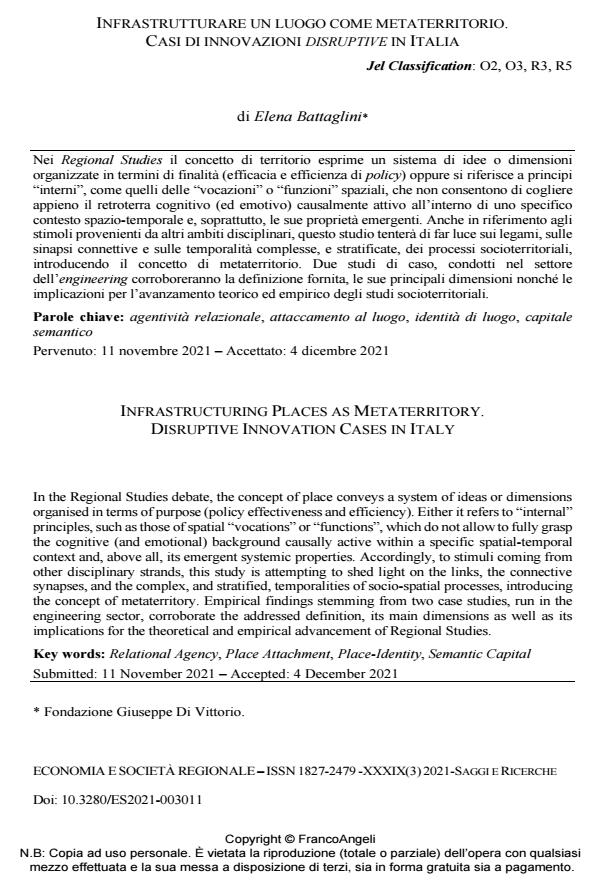Infrastructuring places as metaterritory. Disruptive innovation cases in italy
Journal title ECONOMIA E SOCIETÀ REGIONALE
Author/s Elena Battaglini
Publishing Year 2022 Issue 2021/3
Language Italian Pages 30 P. 141-170 File size 577 KB
DOI 10.3280/ES2021-003011
DOI is like a bar code for intellectual property: to have more infomation
click here
Below, you can see the article first page
If you want to buy this article in PDF format, you can do it, following the instructions to buy download credits

FrancoAngeli is member of Publishers International Linking Association, Inc (PILA), a not-for-profit association which run the CrossRef service enabling links to and from online scholarly content.
In the Regional Studies debate, the concept of place conveys a system of ideas or dimensions organised in terms of purpose (policy effectiveness and efficiency). Either it refers to "internal" principles, such as those of spatial "vocations" or "functions", which do not allow to fully grasp the cognitive (and emotional) background causally active within a specific spatial-temporal context and, above all, its emergent systemic properties. Accordingly, to stimuli coming from other disciplinary strands, this study is attempting to shed light on the links, the connective synapses, and the complex, and stratified, temporalities of socio-spatial processes, introducing the concept of metaterritory. Empirical findings stemming from two case studies, run in the engineering sector, corroborate the addressed definition, its main dimensions as well as its implications for the theoretical and empirical advancement of Regional Studies.
Keywords: Relational Agency, Place Attachment, Place-Identity, Semantic Capital
Elena Battaglini, Infrastrutturare un luogo come metaterritorio. Casi di innovazioni disruptive in Italia in "ECONOMIA E SOCIETÀ REGIONALE " 3/2021, pp 141-170, DOI: 10.3280/ES2021-003011